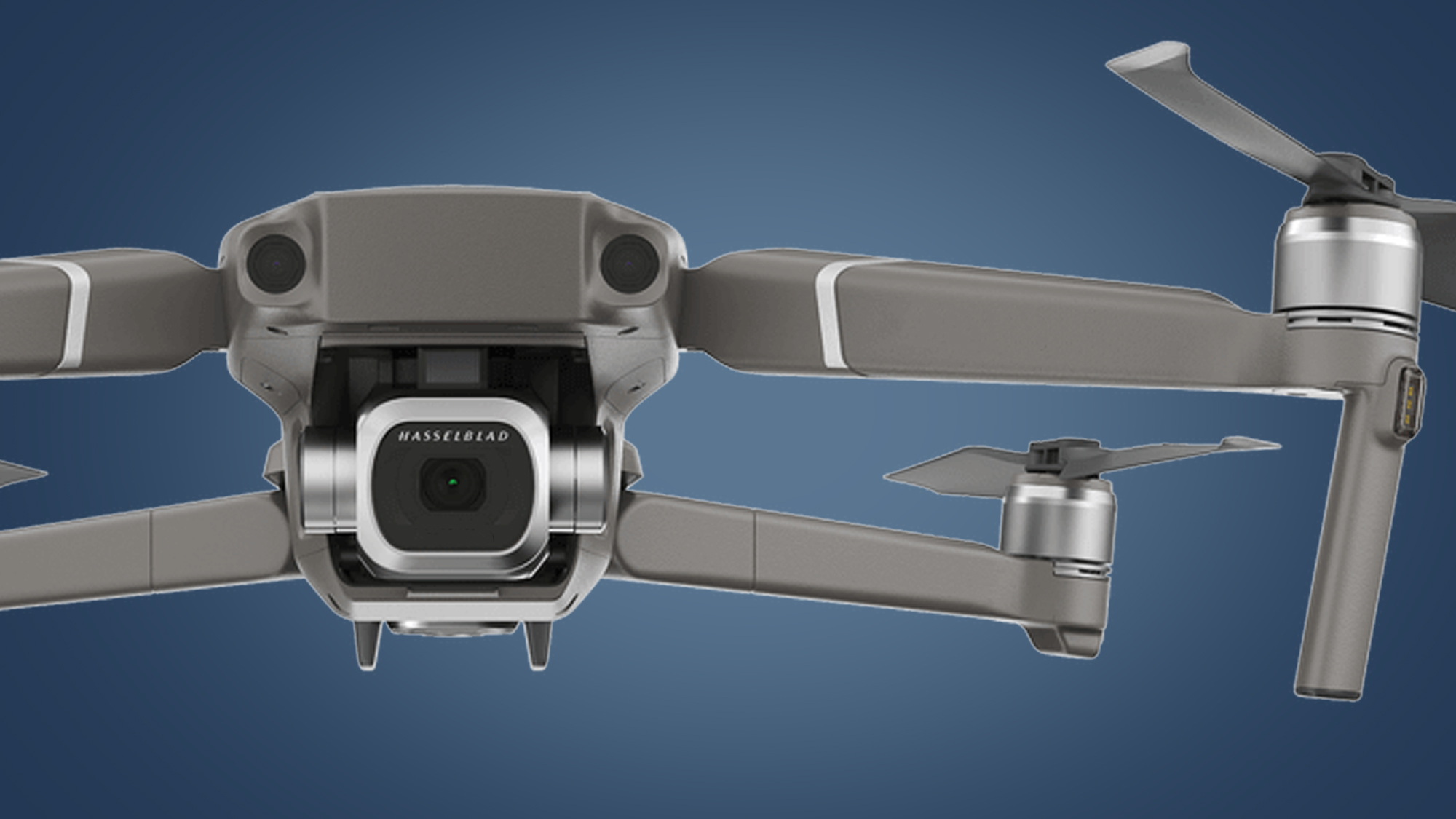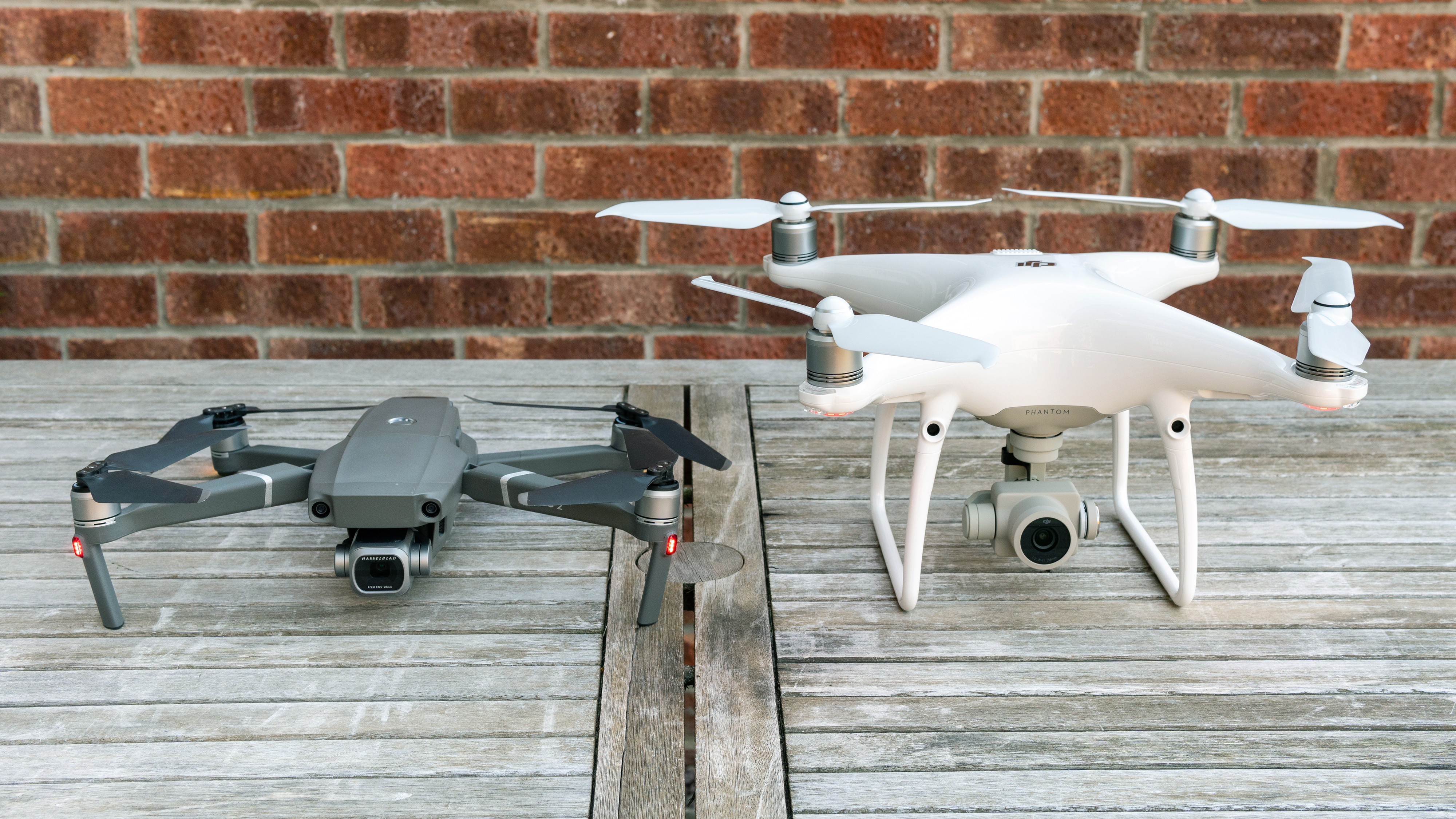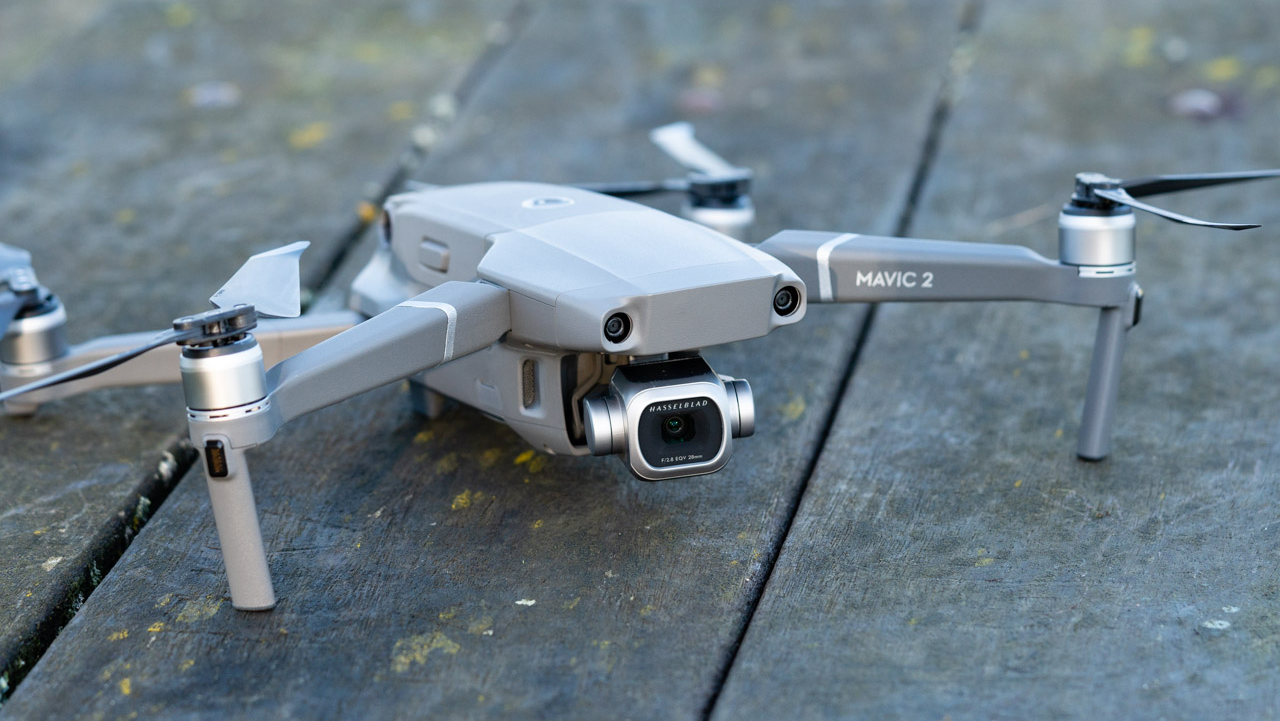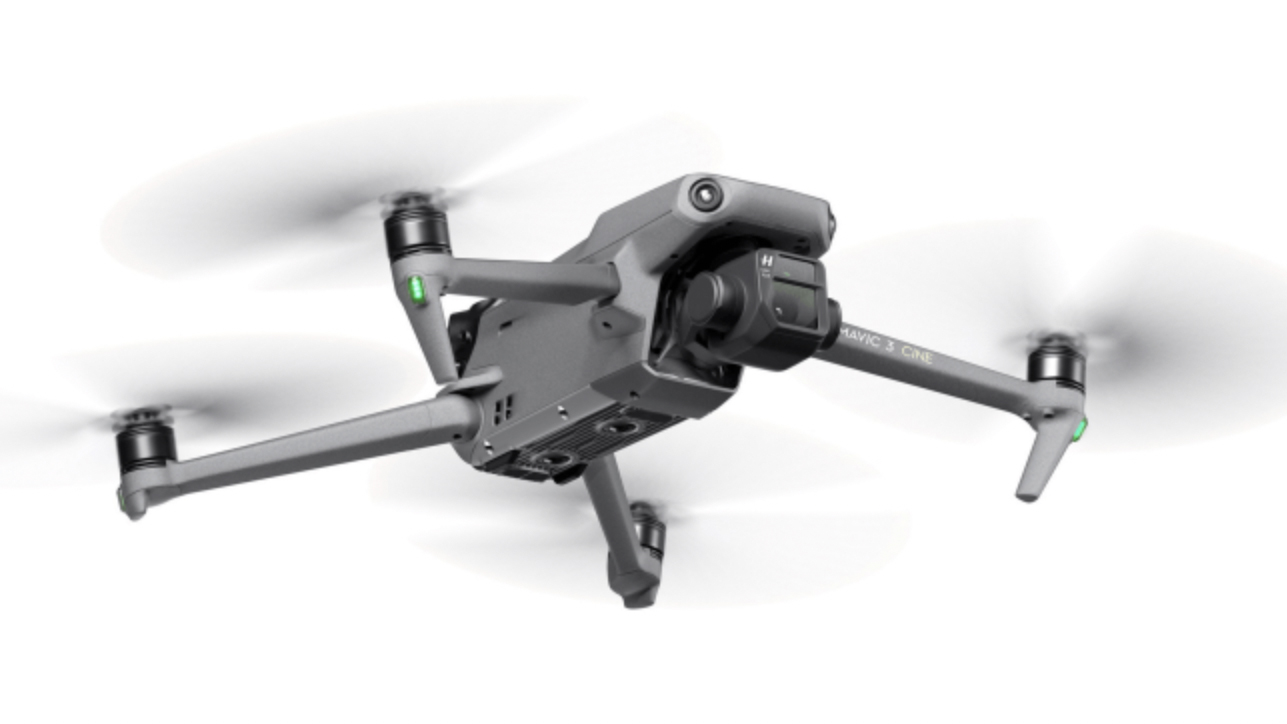Why I might not buy the DJI Mavic 3 (despite selling my DJI Mavic 2 Pro)
Opinion: My drone plans are up in the air, for now...

The DJI Mavic 3 has moved from rumor to virtual certainty in recent days, with a huge leak picked up by TechnikNews and DroneXL showing the drone's likely design from most angles.
This means the launch, which will most likely take place on the November 5 date teased by DJI itself on social media, is almost here. But despite recently selling my DJI Mavic 2 Pro (below) in anticipation of its successor's arrival, I'm still in two minds about buying a DJI Mavic 3 at launch, for several reasons.

It isn't that the DJI Mavic 3 doesn't, on paper, sound like an exciting drone. A leaked manual points towards an impressive dual camera, with the main one offering a 20MP Four Thirds sensor with an adjustable f/2.8-f/11 aperture. That second camera will also apparently be a useful 7x optical zoom telephoto lens with a 12MP 1/2in sensor.
Then there’s a possible maximum flight time of over 40 minutes, thanks to the rumored 5,000mAh battery. But with a possible take-off weight of 920g and a hefty rumored price tag, parting with my hard-earned cash on launch day is far from guaranteed. As a European resident, there are also some looming concerns around classification laws – not to mention the possibility of Black Friday drone deals on the horizon...
In transition
I’ve been a happy owner of a DJI Mavic 2 Pro for several years, but recently sold the drone for several reasons.
Firstly, I was anticipating of the launch of the DJI Mavic 3, so wanted to get the best possible price for it. Secondly, some new European Union Aviation Safety Agency (EASA) drone regulations are coming into force on January 1 2023, which creates possible complications for older drones (more on that later).
And lastly, I've been using the Mavic 2 Pro less and less over the past year, simply because carrying its 907g weight has become a real burden alongside my regular photography gear.
Get daily insight, inspiration and deals in your inbox
Sign up for breaking news, reviews, opinion, top tech deals, and more.

As a predominantly outdoor photographer, alongside the portrait work I shoot, the weight of my gear is always an important consideration.
The rumored specs of the DJI Mavic 3 are seriously tempting, but the size of the Mavic 3 will likely be similar to its predecessor, while the take-off weight of the aircraft is likely to be marginally greater. If you buy the Cine bundle, the controller could also come in at a whopping 750g.
So, even with the amazing rumored specs of the Mavic 3, they may not be quite enough to alleviate the size and weight issues that were partly behind my sale of the DJI Mavic 2 Pro.
A different class
Another of the big problems facing European drone operators, both amateur and professional, is the new European Union Aviation Safety Agency (EASA) drone regulations, which come into force on January 1 2023.
Put simply, these new regulations dictate that drones must be given one of five class identification labels, based on the drone's size, weight and safety features. These will determine where the drones can be flown and how close they can get to people and buildings.
The problem? The details of these new identification labels haven't yet been confirmed, so today's drones are in a tricky transitional period. From January 1 2023, all 'legacy' drones without a 'CE Class' identification label – which could include the DJI Mavic 2 Pro an DJI Mavic 3 – will go into one of two categories: the Open A1 sub-category (for drones under 250g) or the A3 category (if the drone weighs between 250g and 25kg).

This means we’ll likely have to wait and see if the DJI Mavic 3 is classified to remain relevant and able to fly in more situations. But even if it isn't at launch, there is potentially some light at the end of the tunnel, as well as for other drones such as the Mavic 2 Pro.
DJI is currently working with industry bodies and looking into putting existing drone models through a process that will verify whether they can have a classification applied retroactively. Once this has been completed, a list of existing drones and their classification will be published on the DJI website.
Recent rumors have suggested that there will be a European version of the Mavic 3, weighing under 900g, that'll allow it to ultimately get a Cx label. But whether or not these drones will need to receive hardware and/or firmware upgrades, and whether these will need to be performed by DJI, authorized dealers or owners themselves, has not been decided.
Drone operators in the US don’t have to worry about this new European legislation, although there is one thing that American drone operators will need to do from 2023. From 2022 onwards, all new drones weighing over 250g/0.55lbs will have to be fitted with equipment to broadcast the location of both the drone and the operator. While from 2023, when the new law comes into play, older drones will have to be retrofitted with a broadcasting module, otherwise it will be illegal to fly in the vast majority of situations.
The alternatives
I love drone photography and video, but am starting to think that a more compact and lightweight model than the Mavic 2 Pro, like the DJI Air 2S, could be a strong alternative.
Thanks to its 20MP 1in sensor, the Air 2S can certainly take great photos and video in good light (see my review footage below), and it's almost half the rumored weight of the Mavic 3 at 595g. The only significant downgrade from the Mavic 2 Pro would be the loss of an adjustable aperture, which is admittedly incredibly useful when shooting video.
Then there’s the DJI Mini 2, which could be considered the ultimate portable drone thanks to its incredibly dinky size and weight of just 249g. You’ll barely notice it in your kit bag, and the ability to shoot 4K video and 12MP stills thanks to the 1/2.3in sensor is certainly attractive. Of course, this is quite a climb down from a 1-inch sensor and the inability to shoot D-Cinelike or D-Log video is another significant downgrade.
All of this goes to show that there’s no perfect solution. Resolving one problem with an alternative drone model throws up another downgrade or concession. So, while these two relatively new DJI drones solve the size and weight issue, they’re far from being as feature-packed as the rumored DJI Mavic 3.
- Read our in-depth DJI Air 2S review
Air of uncertainty
Like the recent Sony A7 IV camera, it also appears that the DJI Mavic 3 could also be moving up a price bracket, if the rumors are correct.
While it may turn out to be inaccurate, speculation from Tech Drone Media suggests that the basic DJI Mavic 3 bundle will cost €2,150, with the Mavic 3 Fly More Combo up at €2,900. This means the DJI Mavic 3 will likely start at around $2,049 / £1,899 / AU$3,499 – if so, that'd be quite a leap from the Mavic 2 Pro's $1,599 / £1,349 / $2,499 launch price.
A final factor in my procrastination is that the DJI Mavic 3 is launching so close to the Black Friday sales, which officially start on November 26. It's extremely unlikely that we'll see any discounts on the Mavic 3 itself, assuming it does arrive on November 5, but price cuts on other drones that I'm considering are distinctly possible.

Last year, DJI's 'Black Friday sale' took place between November 20-30, so if it follows the same format this time, we can expect to hear what Black Friday drone deals it has in store from November 19, just a couple of weeks after the Mavic 3 launch. Of course, that might be enough time for the early Mavic 3 pre-orders to sell out, but it's a risk I'm probably willing to take.
The Mavic 3 looks like it's going to be an incredible drone – the best prosumer drone DJI has produced to date – but whether the attractive specs and features make it worth carrying that weight, from my point of view, is a really tough decision. And with no clarity yet as to whether the drone will have a CE class identification to comply with the coming regulations, the air of uncertainty will likely keep my wallet firmly tucked in my pocket – for now.
- These are the best drones you can buy right now
James Abbott is a professional photographer and freelance photography journalist. He contributes articles about photography, cameras and drones to a wide range of magazines and websites where he applies a wealth of experience to testing the latest photographic tech. James is also the author of ‘The Digital Darkroom: The Definitive Guide to Photo Editing’.
